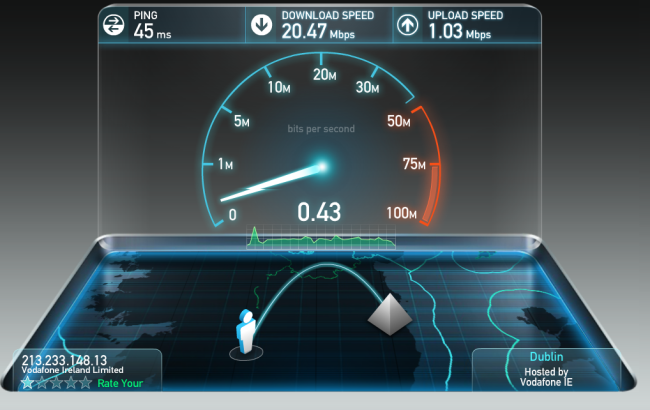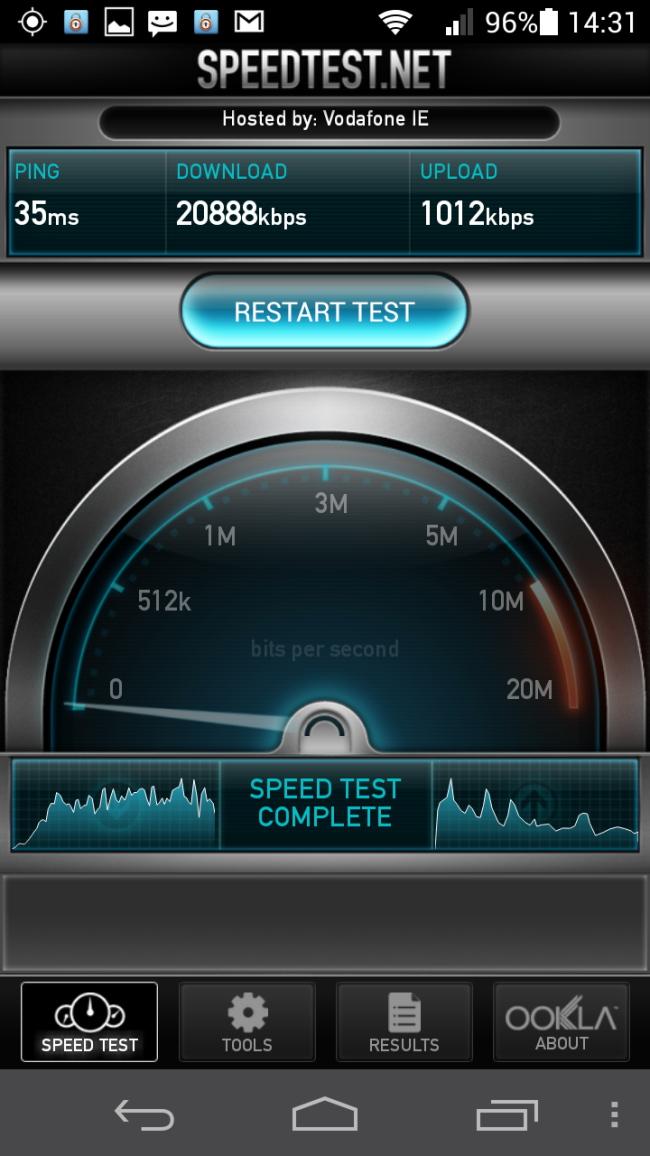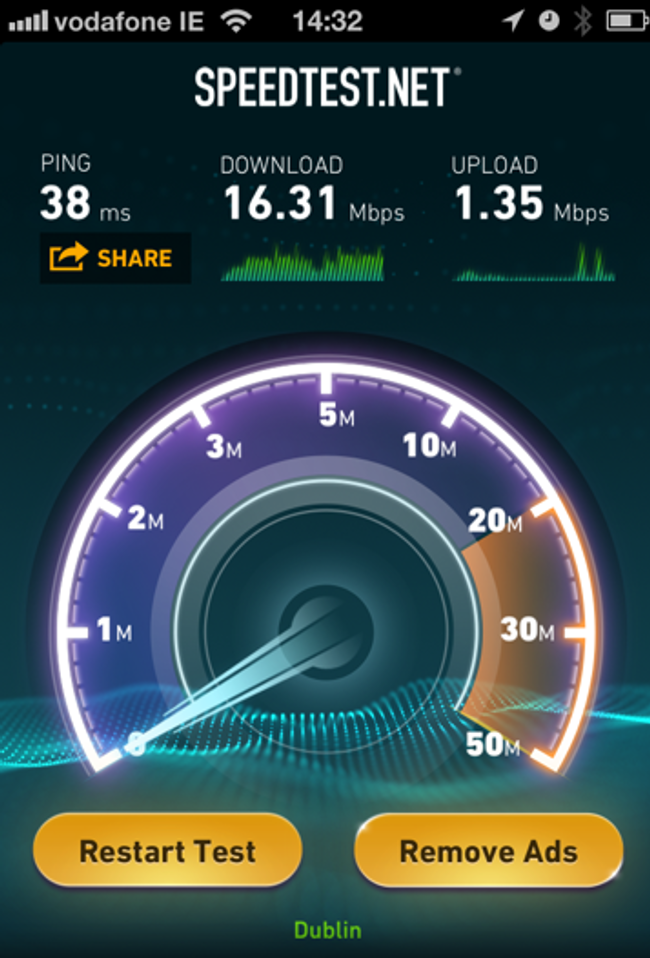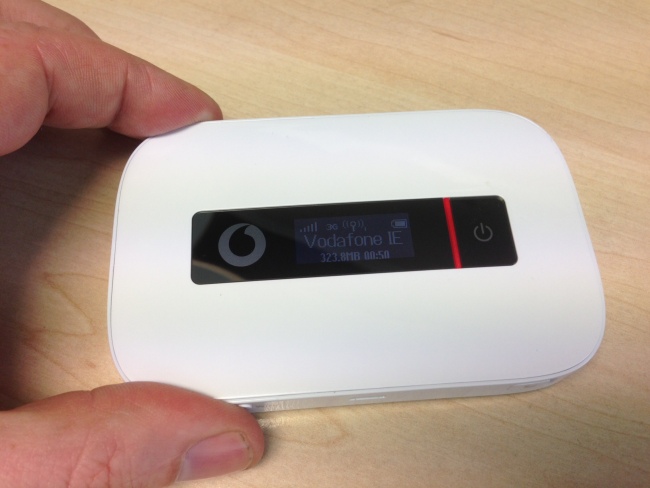Vodafone's Huawei mobile Wi-Fi device
Vodafone today announced its new high-speed mobile Wi-Fi device from Huawei. We’ve had our hands on one for the past few weeks and put it through its paces.
As I roamed around the Mobile World Congress in Barcelona, Spain, earlier this year my eyes kept falling upon a confectionary of shiny devices the size of a deck of cards in a myriad of colours.
These were 4G (LTE) devices that were being specifically targeted at Asia’s youth culture and they looked the part in their metallic blue, hot pink and burnt orange colour schemes.
I sidled up to one of the representatives on the ZTE stand and politely asked her what they were. She replied they were mobile Wi-Fi devices that would transmit Wi-Fi on the back of 4G among up to 10 devices at speeds of between 70Mbps and 120Mbps.
Sufficiently gobsmacked, I took a few pictures and withdrew grumbling that at the time my house DSL connection was giving me 7Mbps on a good day.
I couldn’t get the idea out of my head of clusters of students in the near future gathering around these devices in parks and city corners to get their music, social networks and live the perfect fusion of physical and digital lives.
But there’s more to this and it’s the business potential, with teams able to go anywhere and set up a mission-critical office in any place. Think exhibitions, conferences, hotels, live sport events, you name it.
New adventures in Mi-Fi
Today, Vodafone has brought the matter forward somewhat with the launch of its Huawei mobile Wi-Fi device, which delivers Wi-Fi to up to 10 devices using current 3G HSPA+ broadband.
In the coming weeks, the mobile operators will be jostling to become the first to launch commercial 4G services in Ireland. In the UK, that date has been tipped at 29 August.
In the meantime, the mobile Wi-Fi product launched today based on 3G dual-band gives a tantalising glimpse of the kind of services we’ll be enjoying in the coming years.
The device – clad in the distinctive white Vodafone prefers on its consumer and business products – is no bigger than a deck of cards and weighs about the same.
It has a tiny LED screen that indicates signal coverage when turned on.
Connecting to it is very easy: just do a search on your smartphone or PC and find the network. Press the power button on the Mi-Fi device and you get your Wi-Fi key (code) and once you enter it you’re instantly connected.
Experience
Again, while it is not 4G, the thing that surprised me most was the broadband speeds I was able to get. Using Speedtest.net I was able to record download speeds of 20.2Mbps and upload speeds of 900Kbps on my PC.

On my iPhone I was able to record a download speed of 16.31Mbps and an upload speed of 1.35Mbps.
While on an Android device I was able to record a download speed of 20.8Mbps and an upload speed of 1Mbps.

The mobile Wi-Fi device will certainly have its uses among Ireland’s growing mobile workforce. According to Circle Research, 89pc of Irish businesses are already using mobile data.
While I tested the device using three connected devices simultaneously, it is possible to connect up to 10 users at any one. As I said, this will enable firms to set up pop-up offices in any location for a variety of reasons. One taxi firm in Cork, Cork Taxi Co-op, is already using these devices to set up mobile dispatch centres and transmit advertising content to devices at the back of headrests. The mind boggles.
As well as Android and iOS devices, the mobile Wi-Fi product supports Mac and PC – effectively any connected device, really. It is capable of a maximum download speed of 42Mbps and a maximum upload speed of 5.7Mbps. it also comes with a handy Micro SD storage slot to handle up to 32GB of storage.
The device comes with data packages of €20.32 per month for 10GB data allowance and download speeds of up to 21.6Mbps or €28.45 per month for a 10GB data allowance and download speeds of up to 42Mbps.
Verdict
These devices are pretty much a sign of things to come, as in places where 4G is already standard. Shiny devices from Huawei and ZTE will proliferate and if the mobile carriers deliver on their promise of putting 3G wherever there used to be 2G I can see these devices becoming a handy alternative for home owners who have been consistently let down again and again in terms of the failure to deliver DSL into their areas.
I see this as a flexible alternative that could be enjoyed by both families and businesses that want to bring connectivity for multiple users wherever they go.

